Our Library
Explore our publications, from research papers and series to educational materials, covering all aspects of conflict transformation and peace promotion.
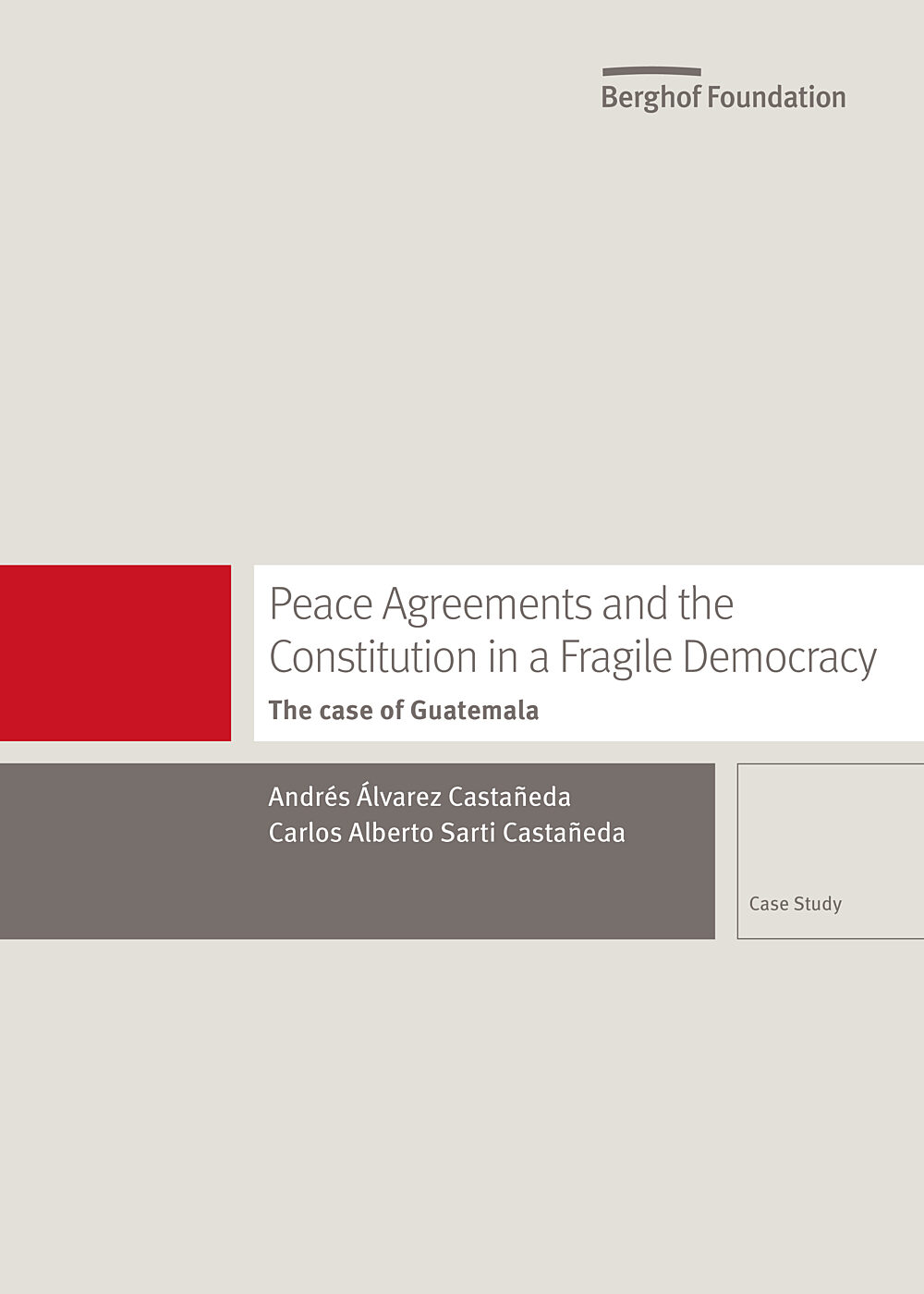
Peace Accords and the Constitution in a Fragile DemocracyThe case of Guatemala
Sarti and Álvarez jointly examine the Guatemalan Peace Accords of 1996, which put an end to the 36-year long civil war that was characterized by a high civilian death rate and widespread commitment of war crimes and crimes against humanity.
- Year2019
- Author(s)Andrés Álvarez Castañeda, Carlos Alberto Sarti Castañeda
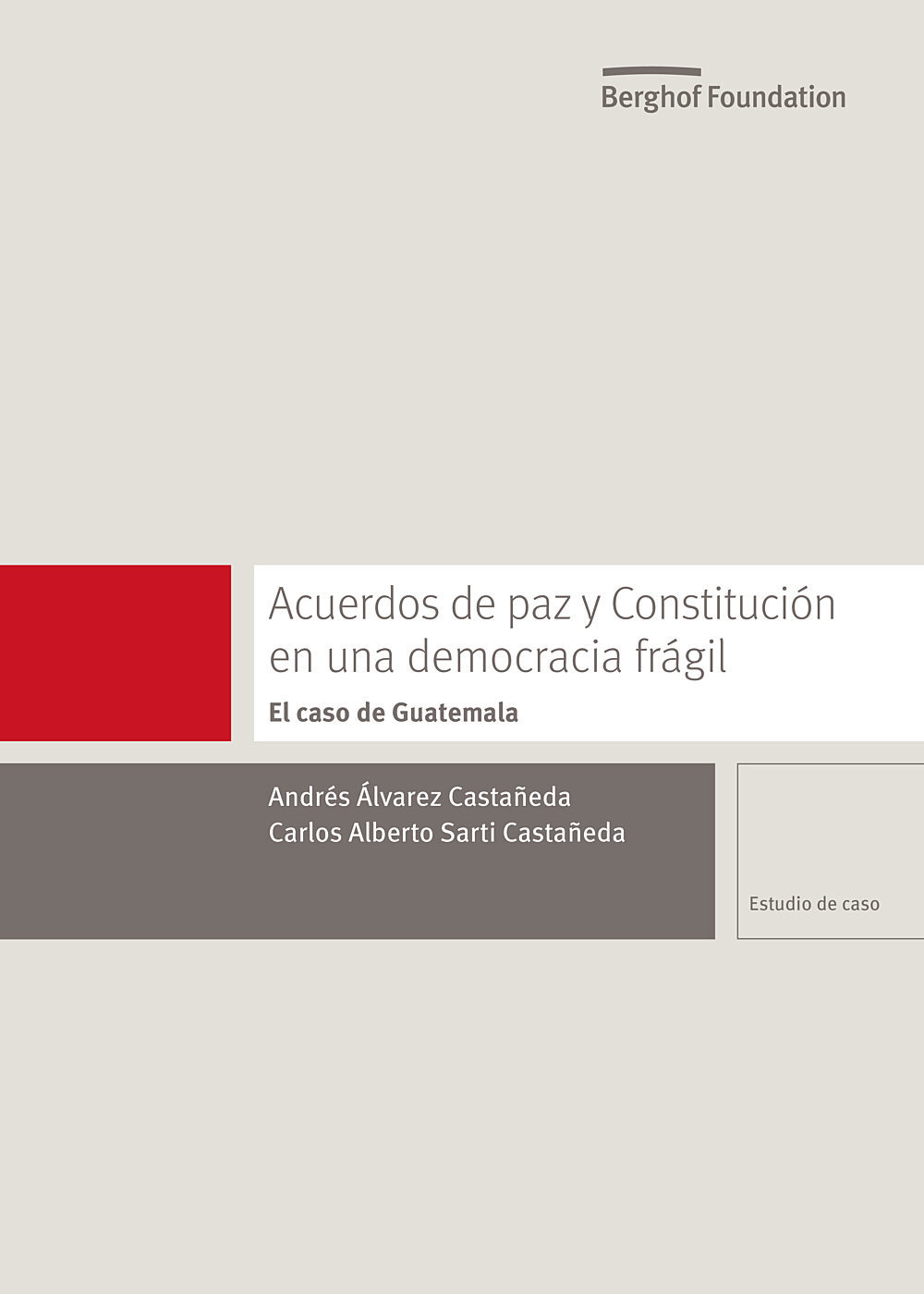
Acuerdos de Paz y Constitución en una Democracia FrágilEl Caso de Guatemala
Aunque instituciones y expertos/as han resaltado la importancia de analizar la influencia de la construcción de constituciones en los procesos de paz poco se ha publicado sobre este tema en Guatemala. El caso de Guatemala amerita un especial análisis, dado el tiempo que transcurrió entre el retorno a la democracia y elaboración de la Constitución vigente, y la negociación, firma e implementación de los procesos de paz: La Constitución actual entró en vigor en 1985 y el Acuerdo de Paz se firmó 11 años después, en diciembre de 1996.
- Year2019
- Author(s)Andrés Álvarez Castañeda, Carlos Alberto Sarti Castañeda
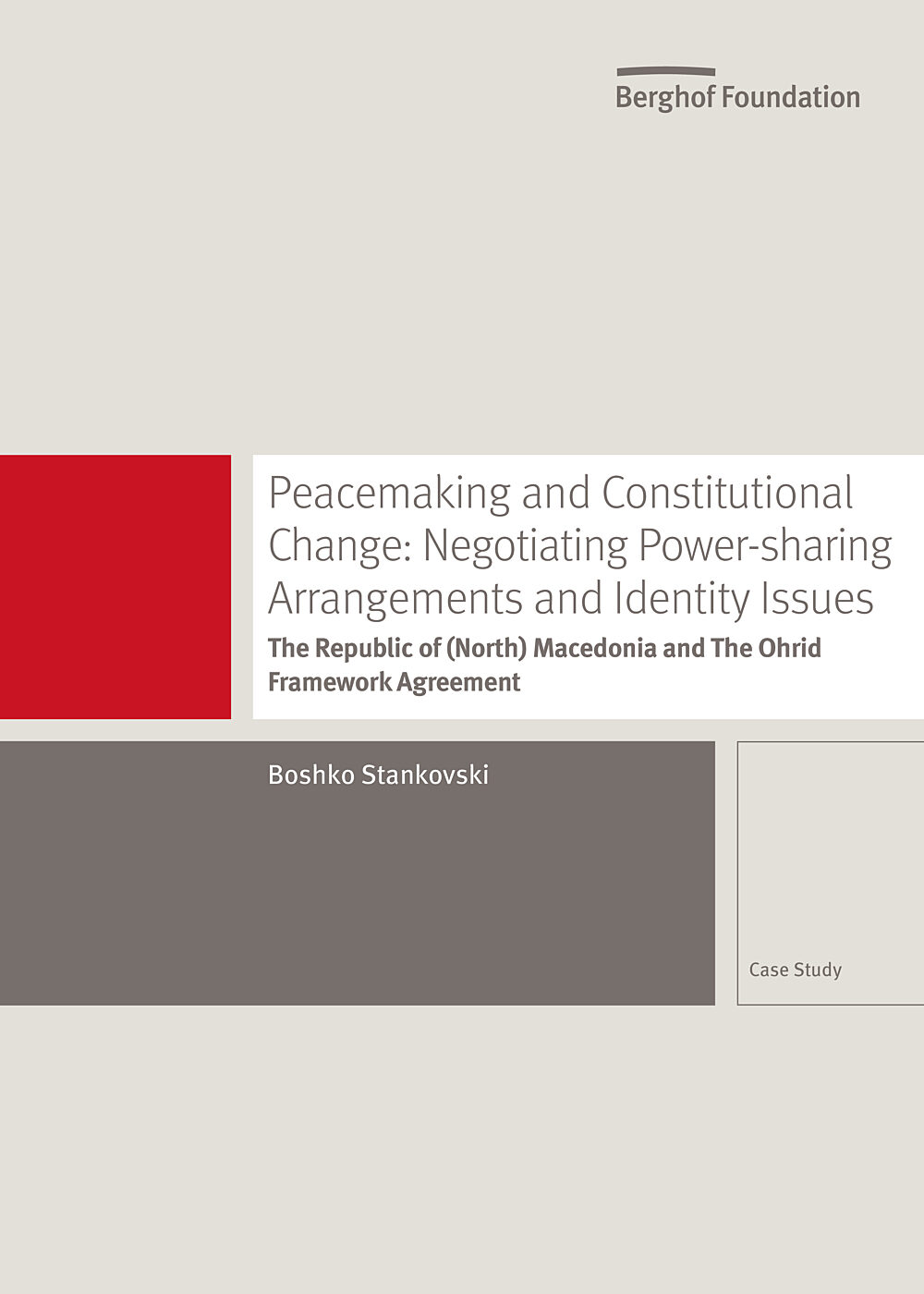
Peacemaking and Constitutional Change: Negotiating Power-sharing Arrangements and Identity IssuesThe Republic of (North) Macedonia and The Ohrid Framework Agreement
Stankovski looks at the case of the Republic of Macedonia and the Ohrid Framework Agreement (OFA) of 2001, which averted a full-blown civil war, the subsequent constitution making process, and the implementation of the constitution.
- Year2019
- Author(s)Boshko Stankovski
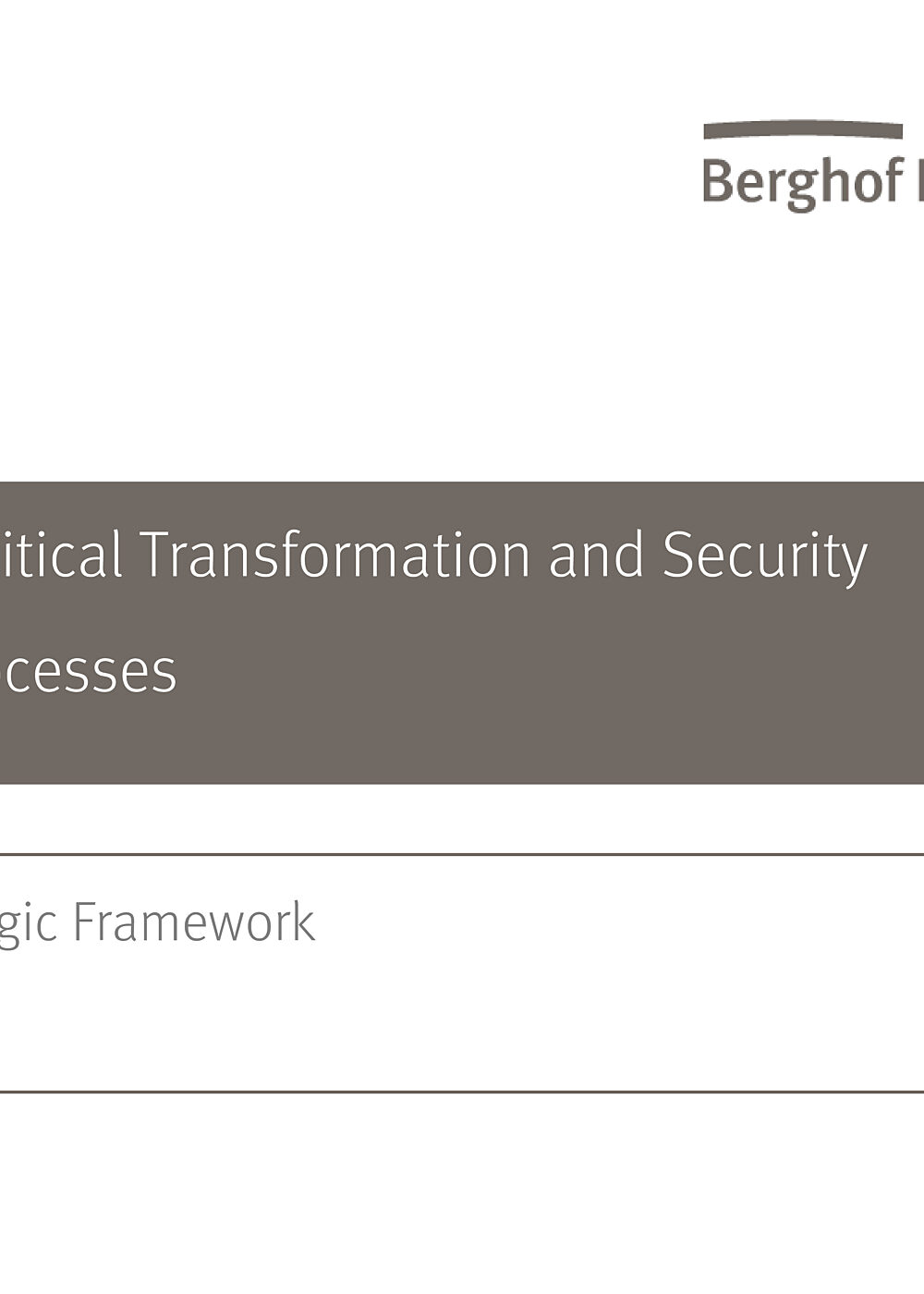
Managing Political Transformation and Security Transition ProcessesA Strategic Framework
This strategic framework was developed based on the 10th Annual Meeting on Negotiations entitled ‘Security Transition and Political Transformation’ held in San Sebastian, Spain, in October 2018. It provides an overview of the most frequent challenges resistance and liberation movements (RLMs) face with regard to transition processes and ways to address such challenges. While in no way exhaustive, we hope that our readers find this overview useful both for reflection and for enhancing their own negotiation strategies.
- Year2019
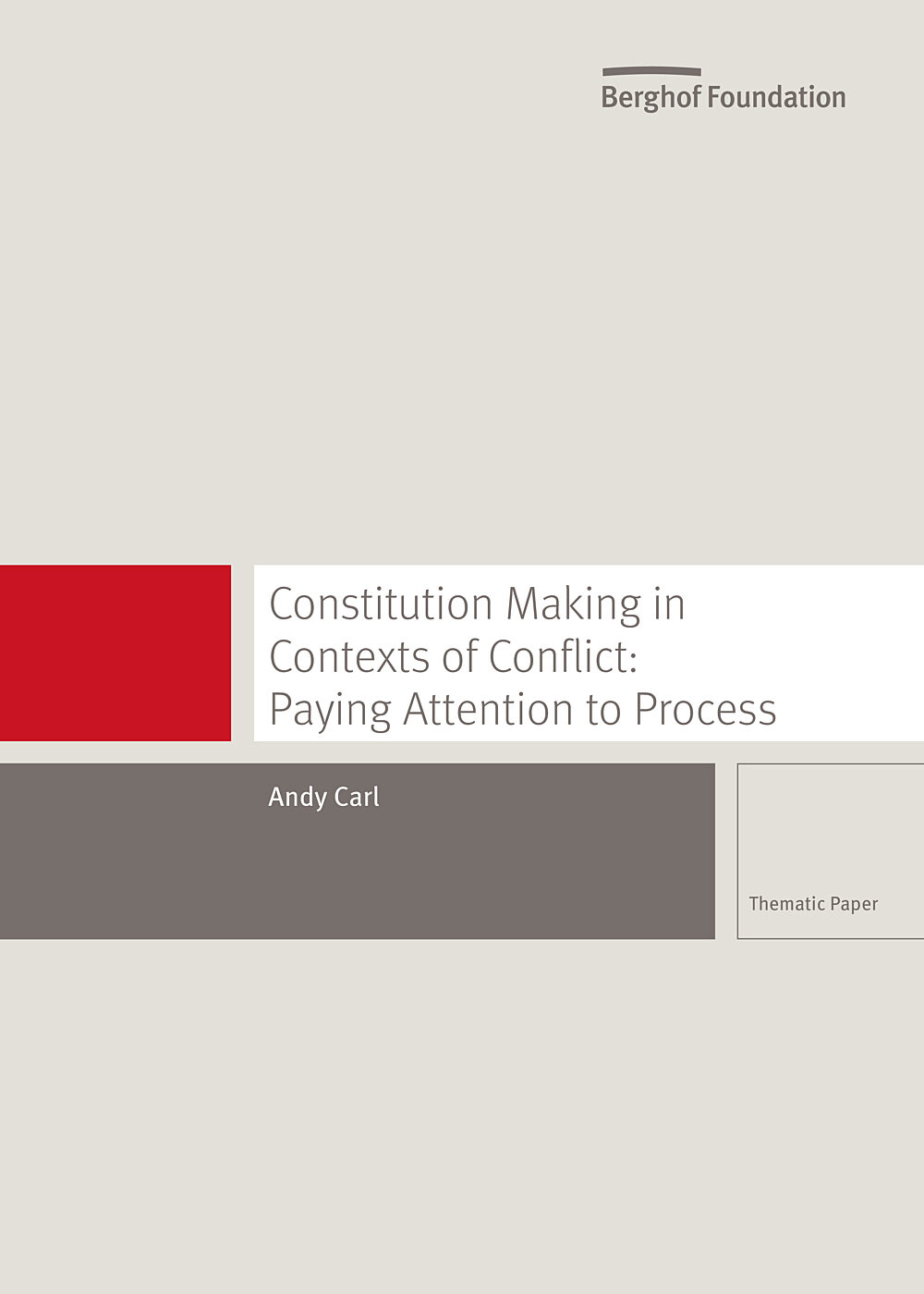
Constitution Making in Contexts of ConflictPaying Attention to Process
Carl sets the background of his study as such: Behind the headlines of reformed and new constitutions lie complex and dynamic processes with prominent and less prominent actors and initiatives, all taking place in same space and time as the ongoing crisis and conflicts. When successful, their actions add up to processes of constitution building that represent a new and purposeful dynamic of accommodation and assertion of a new law-based order. This transformative change emerges out of the counter-current of powerful and self-perpetuating economic, political and social systems of conflict. Within this background, Carl addresses questions like: what do we know about how such change processes happen, and what can we learn from those deliberate, planned and implemented projects, initiatives and interventions? He sets out a series of framing issues and concepts.
- Year2019
- Author(s)Andy Carl
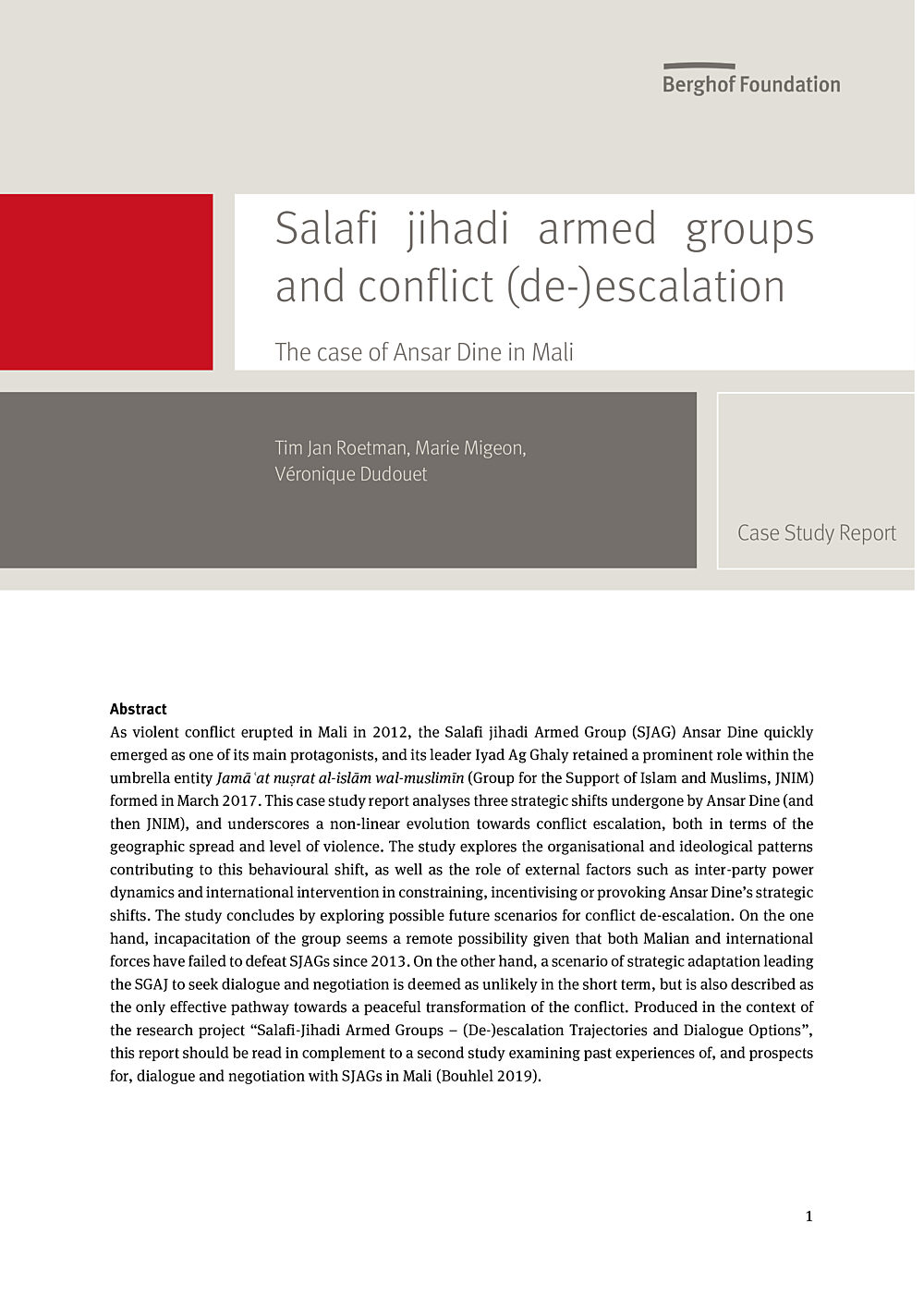
Salafi jihadi armed groups and conflict (de-)escalationThe case of Ansar Dine in Mali
As violent conflict erupted in Mali in 2012, the Salafi jihadi Armed Group (SJAG) Ansar Dine quickly emerged as one of its main protagonists, and its leader Iyad Ag Ghaly retained a prominent role within the umbrella entity Jamāʿat nuṣrat al-islām wal-muslimīn (Group for the Support of Islam and Muslims, JNIM) formed in March 2017.
- Year2019
- Author(s)Tim Jan Roetman, Marie Migeon, Véronique Dudouet
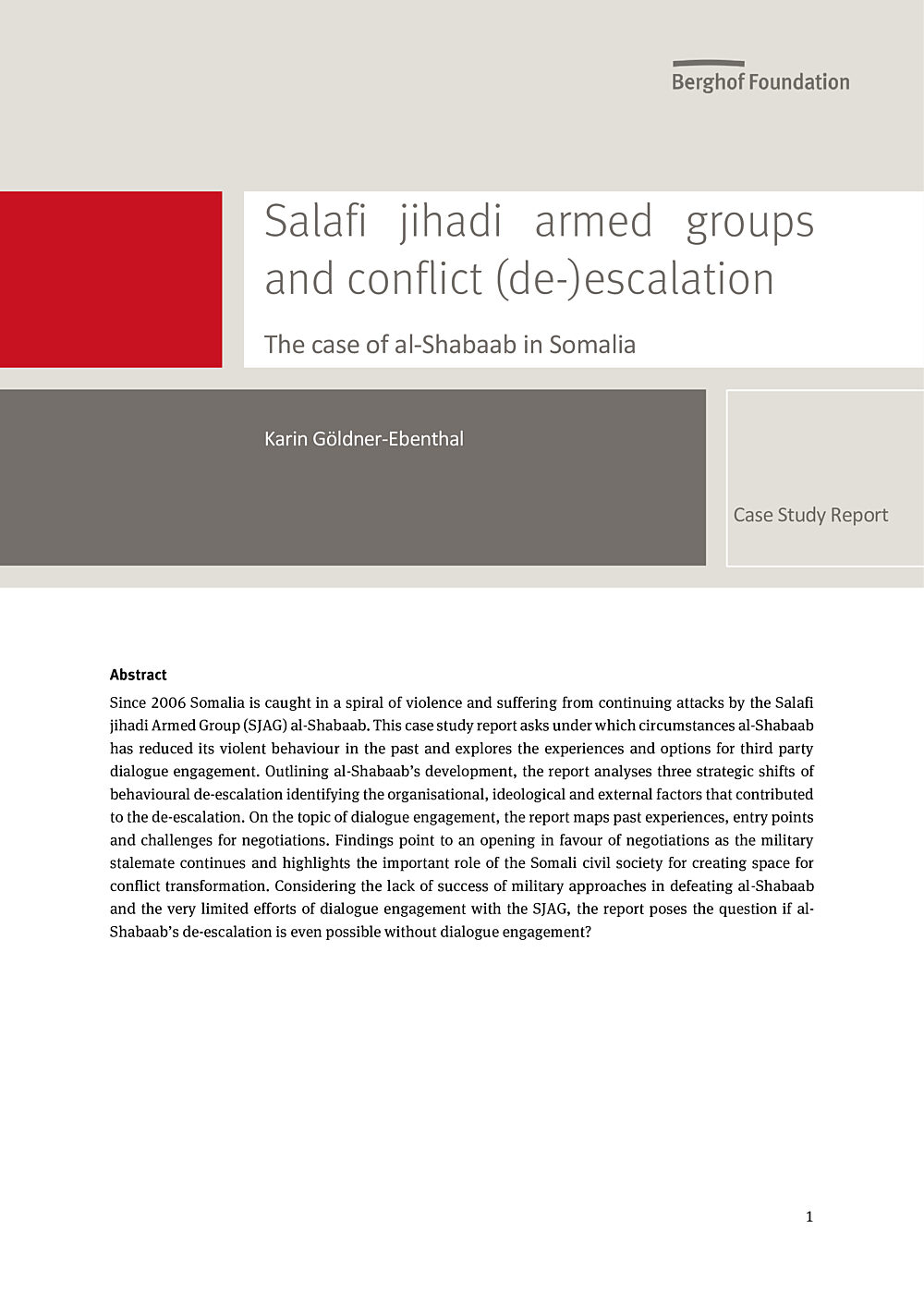
Salafi jihadi armed groups and conflict (de-)escalationThe case of al-Shabaab in Somalia
Since 2006 Somalia is caught in a spiral of violence and suffering from continuing attacks by the Salafi jihadi Armed Group (SJAG) al-Shabaab. This case study report asks under which circumstances al-Shabaab has reduced its violent behaviour in the past and explores the experiences and options for third party dialogue engagement.
- Year2019
- Author(s)Karin Göldner-Ebenthal
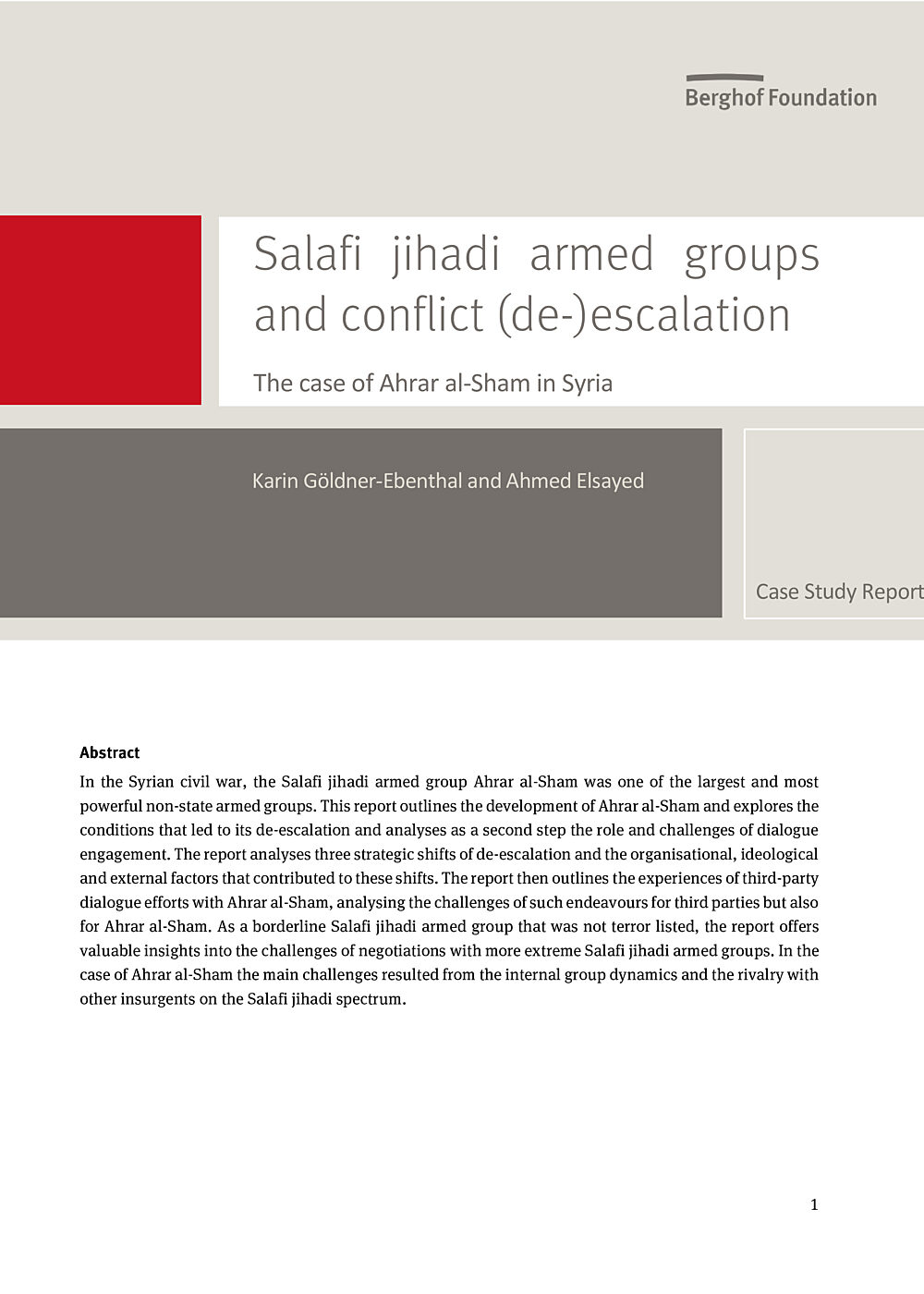
Salafi jihadi armed groups and conflict (de-)escalationThe case of Ahrar al-Sham in Syria
In the Syrian civil war, the Salafi jihadi armed group Ahrar al-Sham was one of the largest and most powerful non-state armed groups. This report outlines the development of Ahrar al-Sham and explores the conditions that led to its de-escalation and analyses as a second step the role and challenges of dialogue engagement.
- Year2019
- Author(s)Karin Göldner-Ebenthal, Ahmed Elsayed
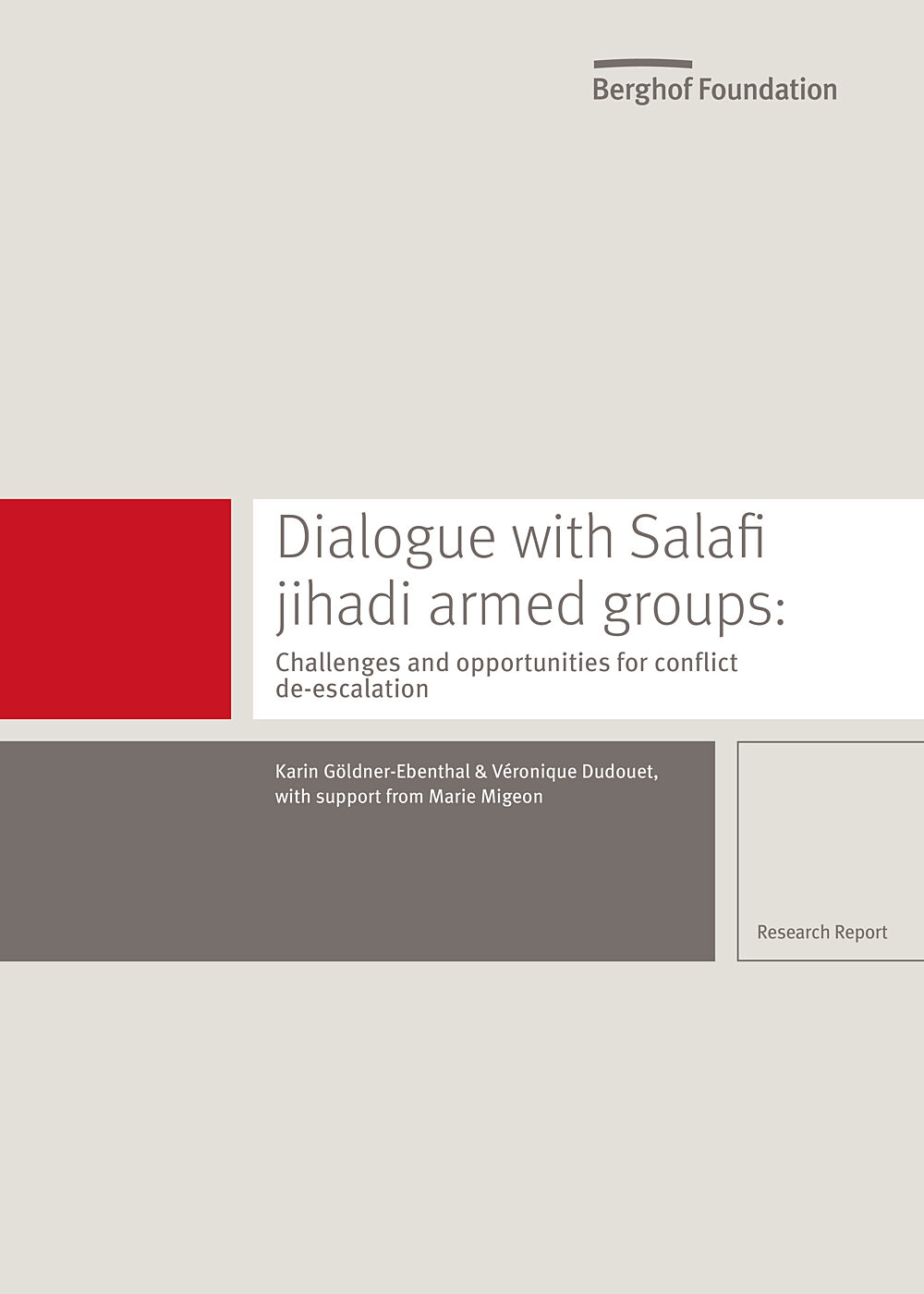
Dialogue with Salafi jihadi armed groupsChallenges and opportunities for conflict de-escalation
In some of the most intense ongoing armed conflicts (Syria, Iraq, Afghanistan, Somalia and Nigeria, to name a few), violent state challengers are characterised by their radical religious beliefs rooted in Salafi-based Islamism.
To better understand possible pathways to violence de-escalation or conflict transformation in such contexts, one needs to analyse the behavioural, ideological and organisational patterns of Salafi jihadi armed groups (SJAGs).
- Year2019
- Author(s)Karin Göldner-Ebenthal, Véronique Dudouet, Marie Migeon
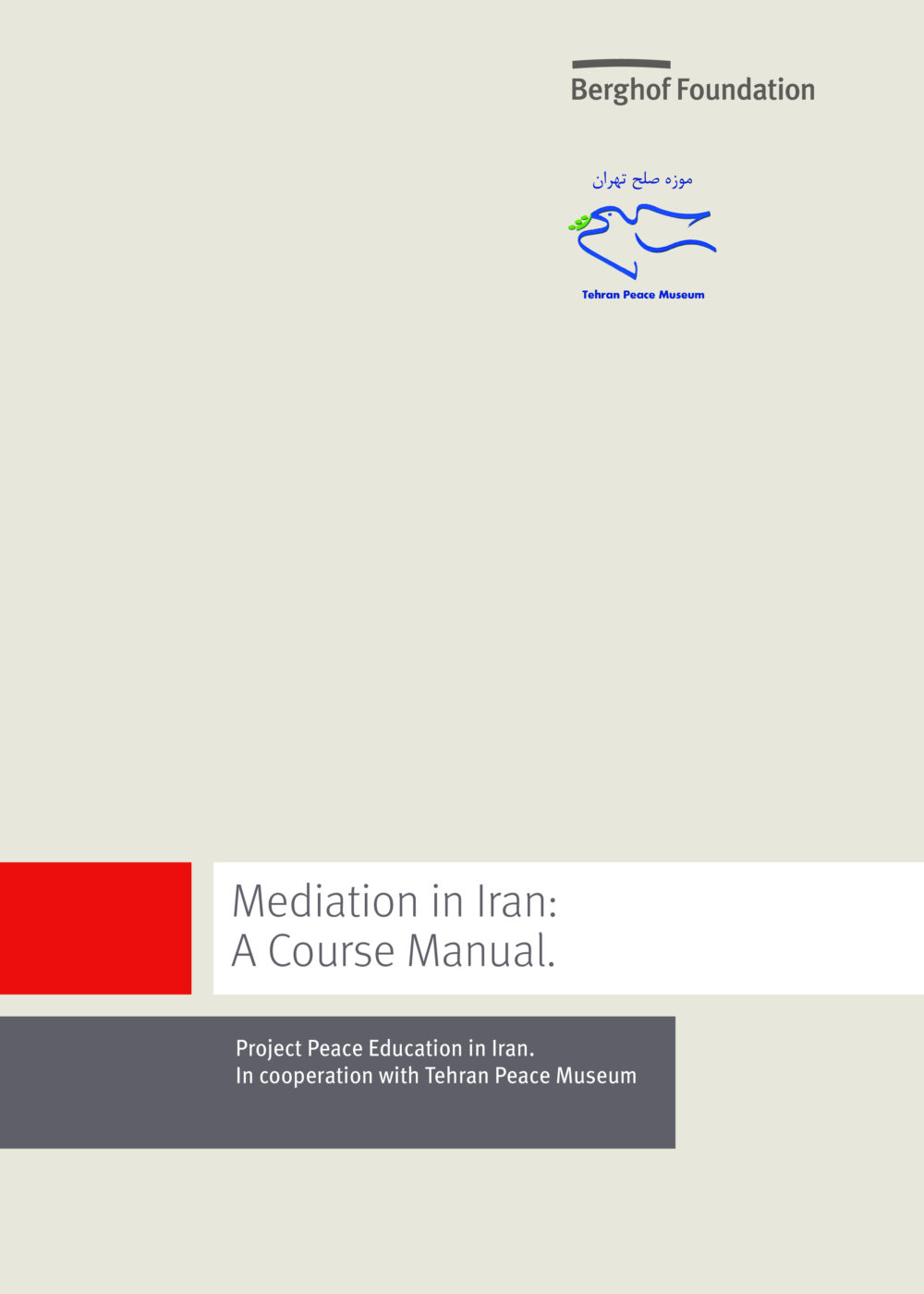
Mediation in Iran: A Course Manual.Project Peace Education in Iran. In cooperation with Tehran Peace Museum
Dealing with conflict in a constructive way as an inseparable part of life requires different tools and each country and community has come up with different methods for that. Traditional mediation has been used as such a tool in Iran for hundreds of years. The Berghof Foundation's Peace Education and Global Learning Programme and the Tehran Peace Museum (TPM) have developed a qualification course on mediation. The manual is available for free download here in English and Farsi and contains an overview of the mediation approach adapted to the Iranian context. The manual includes an overview of different personal conflict styles, gives an insight into conflict escalation and de-escalation, and the purpose of conflict analysis. It introduces the mediation approach, its principles and characteristics, and shows how mediation can be used in different phases of conflict. It also focuses on and the characteristics, competencies, skills and roles of a mediator. And it connects the mediation approach with experiences from Iran, especially in the field of insider and faith-based mediators.
- Year2019
- Author(s)Cora Bieß, Uli Jäger, Isabella M. Bauer, Yalda Khosravi, Neda Pouryekta, Eva Sodeik-Zecha